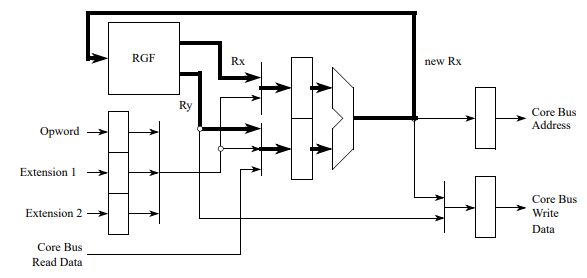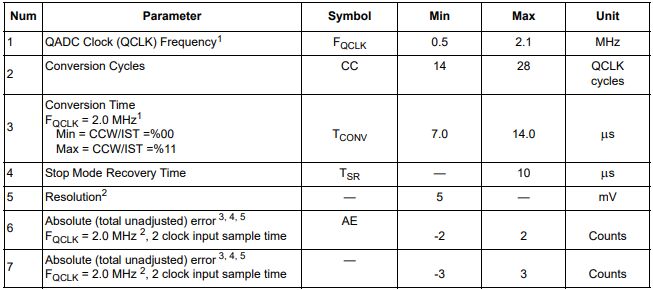By NXP Semiconductors 111
MCF5282CVM66 is a low-power 32-bit microprocessor with scalability and reusability, mainly used in embedded systems. It uses ColdFire® V2 core, which has the advantages of high performance, low power consumption, and reusability.
MCF5282CVM66 is commonly used in embedded systems and has rich peripherals and functional features, including a variety of communication interfaces, timers, digital I/O, etc. MCF5282CVM66 uses a 66MHz main frequency, built-in flash memory and SRAM, and is suitable for application scenarios that require high performance and low power consumption.
MCF5282CVM66 has a built-in 10/100 Ethernet controller, supports high-speed Ethernet interface, and can provide reliable network connection and data transmission. At the same time, it also has a variety of built-in peripheral interfaces, such as USB, UART, SPI and I2C, etc., which can easily communicate and exchange data with other devices.

Ⅰ.Specifications of MCF5282CVM66
•Products:MCUs
•Number of pins:256
•Height:1.16 mm
•Length:17 mm
•Width:17 mm
•Installation style:SMD/SMT
•Package/Case:MAPBGA-256
•Core:ColdFire V2
•Program memory size:512 kB
•Data RAM size:64 kB
•Data bus width:32 bit
•ADC resolution:10 bit
•Maximum clock frequency:66 MHz
•Number of input/output terminals:150 I/O
•Product category:32-bit microcontroller-MCU
•Supply voltage-Minimum:2.7 V
•Supply voltage-Max:3.6 V
•Qualification:AEC-Q100
•Humidity Sensitivity:Yes
•Minimum operating temperature:-40℃
•Maximum operating temperature:+85℃
•Data Ram type:SRAM
•Power dissipated:720 mW
•Number of inputs/outputs:150 Input
•Program memory type:flash memory
•Dissipated power (Max):720 mW
•Number of ADC channels:18 Channel
•Operating power supply voltage:2.7 V to 3.6 V
•Number of timers/counters:4 x 16 bit
•Watchdog Timer:Watchdog Timer
•Product type:32-bit Microcontrollers-MCU
Ⅱ.Features of MCF5282CVM66
•Two interrupt controllers
•Software watchdog timer
•Supports Ethernet interface for high-speed data transmission
•Has low power consumption characteristics, which can reduce power consumption in various operating modes
•Supports a variety of memory and peripheral interfaces, such as SPI, I2C, UART, GPIO, etc.
•Can be widely used in various fields and is highly customizable and scalable
•Based on PowerPC architecture, using high-performance e500 core, supporting floating point operations and vector processing
•Provides rich peripheral interfaces to facilitate communication and control with external devices
•Has a main frequency of up to 66MHz, suitable for applications with high processing requirements
•Integrated flash memory and SRAM can be used to store program code, data and temporary variables
•Three universal asynchronous/synchronous receiver transmitters (UARTs)
Ⅲ.Power consumption management features of MCF5282CVM66
1.Sleep mode: MCF5282CVM66 supports multiple sleep modes, including standby mode and deep sleep mode. In these modes, the main processor and most peripherals are turned off to reduce power consumption.
•Standby mode: In this mode, the main processor and certain peripherals (such as UART and GPIO) are turned off, while other peripherals (such as I2C and SPI) may still be running. Power consumption in this mode is lower, but the system still maintains a level of responsiveness that allows for a quick return to normal operation.
•Deep sleep mode: In this mode, the main processor and all peripherals are turned off. Power consumption in this mode is extremely low, but it takes longer to return to normal operation.
2.Clock management: The microcontroller provides flexible clock management functions and can dynamically adjust the clock frequency to meet different power consumption requirements. For example, the clock frequency can be reduced to reduce power consumption.
3.Low-power mode switching: Supports quick entry and exit of low-power mode to minimize system power consumption in inactive states.
4.Peripheral control: MCF5282CVM66 allows flexible control of peripherals to enable or disable specific peripherals based on application needs, thereby reducing overall power consumption. For example, in a low-power application, if the system does not need to use certain peripherals (such as UART or SPI interface), the developer can disable these peripherals in the software. This way, these peripherals do not consume any power even when the system is in standby mode or deep sleep mode. Likewise, if a peripheral is not used for a specific period of time, developers can disable it for that period to further reduce power consumption.
5.Low-power standby: In addition to sleep mode, MCF5282CVM66 also provides low-power standby mode. In this mode, the device can enter a standby state to reduce power consumption and maintain the ability to wake up certain peripherals. The implementation of low-power standby mode relies on specific hardware and software strategies. In terms of hardware, MCF5282CVM66 may achieve low-power standby by turning off or reducing the power consumption of certain hardware modules. On the software side, the system may need to write specific code to manage when to enter and exit low-power standby mode, and how to wake up the system.
Ⅳ.Operand Execution Pipeline of MCF5282CVM66

Ⅴ.QADC Conversion Specifications of MCF5282CVM66
(VDDH and VDDA=5.0 Vdc ± 0.5V, VDD=2.7-3.6V, VSS and VSSA=0 Vdc, VRH–VRL=5 Vdc ± 0.5V, TA within operating temperature range, fsys=16 MHz)

Ⅵ.Precautions when using MCF5282CVM66
1.Temperature control: The operating temperature range of MCF5282CVM66 is -40°C to +105°C, so you need to pay attention to the temperature control of the chip when using it to avoid the impact of too high or too low temperature on the chip.
2.Memory usage: MCF5282CVM66 provides a large amount of memory, including 256KB flash memory, 64KB SRAM and 4KB EEPROM. Therefore, memory resources need to be utilized rationally when used to avoid waste.
3.Power supply stability: The operating voltage range of MCF5282CVM66 is 3.0V to 3.6V, so the stability of the power supply needs to be ensured during use to avoid the impact of voltage fluctuations on the chip.
4.Chip layout: MCF5282CVM66 has a large number of pins, so when doing PCB layout, you need to pay attention to the distribution and wiring of the pins to avoid interference and signal loss between pins.
5.Peripheral interfaces: MCF5282CVM66 has a variety of peripheral interfaces, including Ethernet MAC, USB, SPI, I2C and CAN bus, etc. Therefore, it is necessary to select the appropriate interface according to specific application requirements when using it.
Ⅶ.Development environment of MCF5282CVM66
1.Integrated development environment (IDE): Commonly used IDEs include CodeWarrior IDE and Eclipse. These IDEs provide editing, compilation, debugging and simulation functions, allowing developers to easily develop MCF5282CVM66 applications.
2.Debugging Tools: Debugging tools for the MCF5282CVM66 microcontroller help developers diagnose and debug applications. These tools may include emulators, debuggers, monitors, etc.
3.Compiler: The compiler for the ColdFire architecture is a key tool for developing MCF5282CVM66 applications. Commonly used compilers include CodeWarrior Compiler and GNU Compiler Collection (GCC), etc.
4.Software library and driver: The software library and driver for MCF5282CVM66 can help developers quickly build applications and reduce the development cycle. These libraries and drivers are usually provided by chip manufacturers or third parties.
5.Development board: A development board or evaluation board for the MCF5282CVM66 is a key hardware platform for developing and testing applications. These boards feature the MCF5282CVM66 microcontroller and its peripherals, and provide a rich set of interfaces and features to speed up development.
Ⅷ.Block Diagram of MCF5282CVM66

Frequently Asked Questions
1.What are the power management features of MCF5282CVM66?
MCF5282CVM66 supports power management features such as sleep modes, low-power standby, and clock gating to reduce power consumption and extend battery life in embedded systems.
2.What are some common applications of MCF5282CVM66?
MCF5282CVM66 is used in various applications including industrial control systems, network devices, automation systems, and consumer electronics due to its performance, versatility, and low power consumption.
3.How does MCF5282CVM66 ensure reliability and stability?
MCF5282CVM66 offers a wide operating temperature range, robust clock management, and built-in security features to ensure reliability and stability in diverse operating environments.